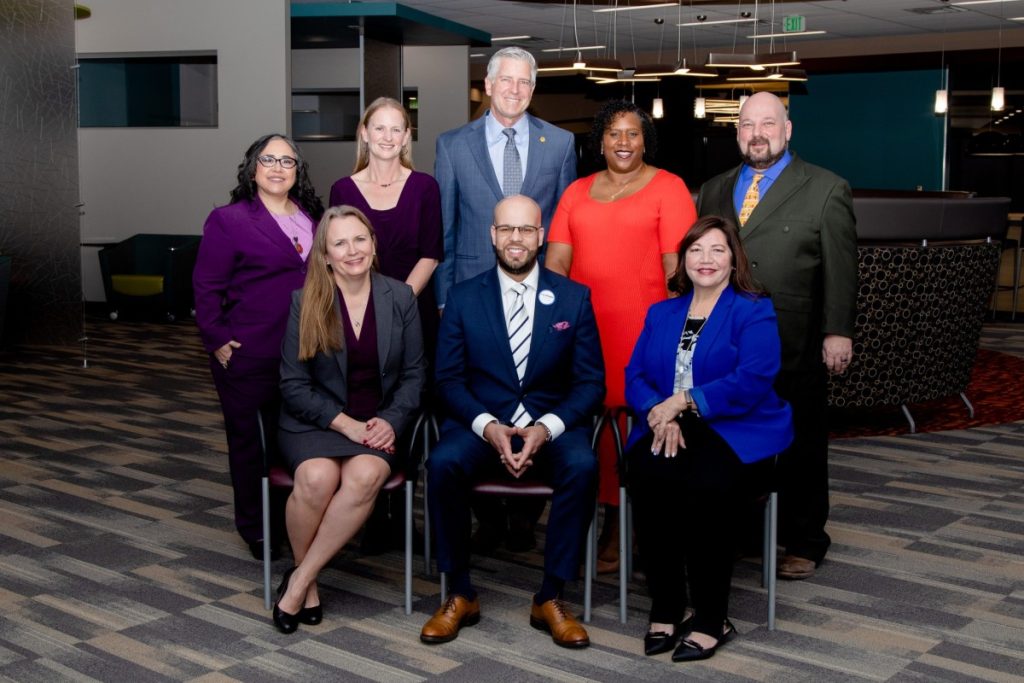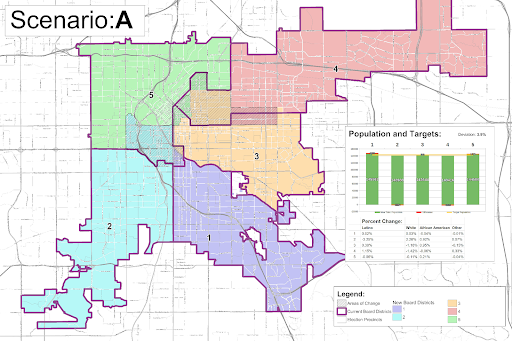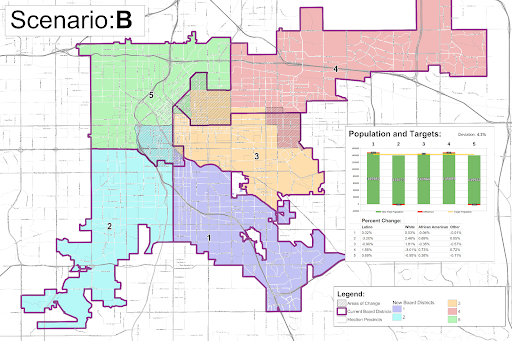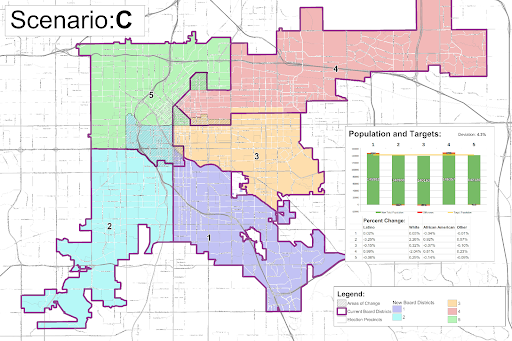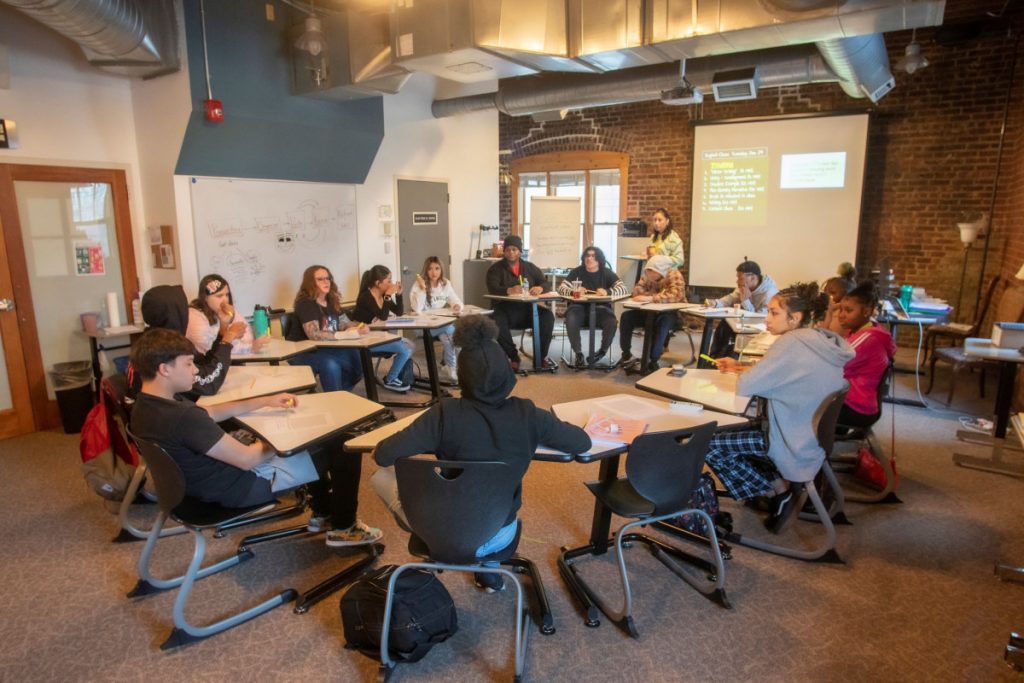Editor’s note: This is April’s piece by Boardhawk columnist Alexis Menocal Harrigan.
Yesterday was April Fools Day, but you would be forgiven for thinking it was Groundhog Day.
Denver Public Schools’ (DPS) Board of Education is once again asking the community to engage in redistricting.
Over the last few days, I have received emails from a DPS board director and two Denver City Council members informing me that DPS is seeking feedback for redistricting. (As a DPS parent, I have yet to receive an email from the district as of the Monday night writing of this article.)
The emails include what I can only assume is standard language for community distribution.
- The Denver Public Schools Board is seeking your input regarding the proposed changes to its districts in order to meet the legal requirements.
- The Board is preparing to adopt a district map at its meeting on April 18, 2024.
- The Board will have two upcoming virtual meetings and has prepared an online survey to obtain community input from Denver residents.
First, and most importantly, If you want to give input on redistricting (more about why it matters here), this is how:
- You can attend virtual community engagement sessions tomorrow, April 3. The first meeting is from noon – 1 pm and the second meeting is from 6-7 pm. Visit this link on April 3 to get the zoom link.
- You can complete this survey.
- You can ask questions by emailing [email protected].
Make sure to review the three different Map Scenarios A, B, and C before providing input.
Now for you process, politics, and policy wonks, keep reading.
Earlier this month, the board held a work session on redistricting. Staff presented the same materials and updates they gave back in February, where the board once again delayed decisions on redistricting.
The discussion started with board President Carrie Olson turning it over to board members Marlene De La Rosa and Michelle Quattelbaum, who had attempted to work together over the preceding weeks on recommendations for how to move forward. It became clear by their opening remarks they were not aligned after their attempts to collaborate.
De La Rosa made a motion for a community engagement process and an April board vote on Maps A, B, and C.
Quattlebaum unsuccessfully attempted to explain that more time is needed, that the maps are not equitable and that DPS has catered to the needs of the Latinx community and that the Black community deserves the same treatment. She tried to make an argument based not on what the Black community needs but what the Latino community received.
Last year the Latino community pushed back on maps that moved a largely white population from West Washington Park into the heavily Latino population of District 2, thus significantly diluting the Latino population by 6.54% (formerly Map E). The other map diluted the Latino population by 5.32% (formerly Map F).
There is no comparison between the percentage of Latino populations diminished in the 2023 maps E and F (that have been removed due to community backlash) and the current maps that do not dilute the Black population by even a half percentage point. The highest Black population dilution in the current maps A, B, and C are .06%, .35%, and .14% respectively.
Quattlebaum was unable to articulate how the current three maps are unfair to the Black community or what needed to be changed. She maintained this incoherent argument through the discussion.
Unfortunately, Quattlebaum sees redistricting as a zero-sum game. If that Latino community is heard and acknowledged, the Black community loses. The data doesn’t show this to be true.
When several other arguments fell short in coherence, including a misunderstanding of what population deviation is, board member Scott Esserman and Quattlebaum approached a very dangerous line when they both attempted to bring up the voting population vs. the total population.
In one breath, Esserman acknowledged the board cannot consider the voting population, while in the next few proceeded to explain that by not considering districts and precincts with heavy voting populations the board may in effect limit the voice of some communities.
Voting 101: Children under 18 and non-citizens are not permitted to vote. The Latino population has higher proportions of children under 18 and non-citizens. Redistricting based on total population and not voting population is why the younger Latino community in Westwood has equal representation to the older white population of Crestmoor Park. I would venture to guess most Denverites value equal political representation for all its residents, not just those with the privilege and right to vote.
As the meeting was winding down, board member Xóchitl Gaytán shared her belief that all of the current maps are fair and that Map B does slightly favor the Black population in District 4. In response, Quattlebaum’s final pivot was to gaslight by stating there was “selective hearing” of her comments.
It was unclear if she was responding to Gaytán, her other board colleagues, or the staff.
The discussion ended with Olson saying she wasn’t aware this was going for a board vote in April, so she voted against the motion to vote for maps during the April board meeting to understand the implications of what a vote would mean.
(She has had time to think about the implications since 2021, when the census data became available, and then again in September of 2021 when the State Supreme Court upheld state legislative and congressional maps, and again when March of 2022 when RTD and City Council approved their maps, and then again in September of 2022 when DPS started to pay attention and start a process, and again in February 2023 when DPS decided to delay the vote, and then again April 2023 when the City’s Clerk and Recorder sent a letter explaining the impact of further delays and stressing the board do the bare minimum of reprecinting, and again in November of 2023 when an election was conducted with highly unbalanced districts, and then again in early 2024 when new board members pushed for resolution, and then again every single time this issues has come up in a board meeting or community discussion since.)
Unfortunately, Olson seems to have been sold on the narrative that this a Black vs. Latino issue. How much more time does she need to determine which community she will pander to?
If Quattelbaum is the commissioner of the oppression olympics, Olson is the embodiment of white guilt, while Esserman continues to play the white savior. While these three spun their wheels without a single rational argument, board members Gaytán, De La Rosa, John Youngquist and Kimberlee Sia are trying to govern and move forward with any one of the three equitable and reasonable maps remaining.
Tomorrow’s community engagement sessions are opportunities for the community to come together and hold board members accountable for redistricting and also to understand their views on political representation. Some questions top of mind for me:
- Director Quattlebaum, can you please explain how these maps are negatively impacting the Black community?
- Director Esserman, do you believe undocumented immigrants and children have the right to be equally represented in DPS redistricting?
- President Olson, how much more time do you need beyond the four years you have had to think about this to understand the implications of your vote?
The board needs to vote on any one of the three fair and equitable maps and move on. This should have been an opportunity to assure the community that the board can work beyond its personal differences and align on a basic democratic principle.
It is clear, however that some board members are seeking to play politics or ignorance. I am not sure which one is worse.

